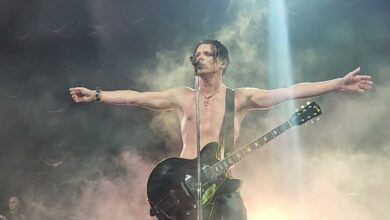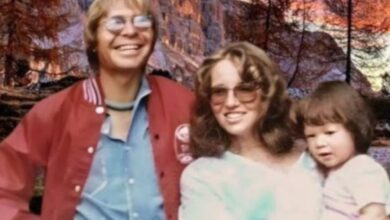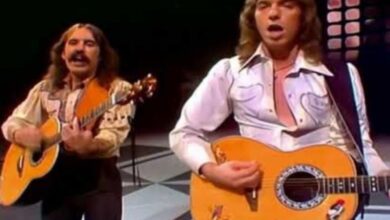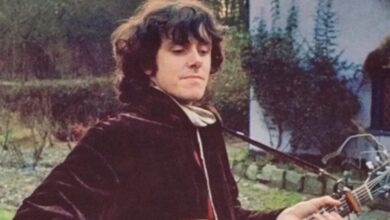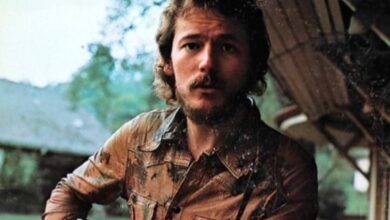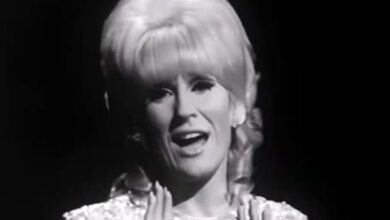George Michael Mesmerizes Wembley with a Soul-Stirring Tribute That Evokes Freddie Mercury’s Legacy
On a stormy April night in 1992, Wembley Stadium became the epicenter of raw emotion during the Freddie Mercury Tribute Concert. George Michael, who stepped onto the stage with a mix of nervous energy and determined calm, was tasked with singing one of Queen’s most demanding songs, “Somebody to Love.” Supported by the surviving Queen members and a powerful gospel choir, Michael transformed the track into more than a tribute—it became a spiritual revival, breathing new life into Freddie’s legacy.
From his sharply tailored black suit to the confident way he commanded the stage, every detail of his performance reflected precision and intent. The song’s notoriously complex range was no obstacle; Michael soared through the high notes, delivered the intricate harmonies with ease, and poured searing passion into every word. In doing so, he managed to celebrate Freddie’s flamboyant brilliance while simultaneously stamping his own artistry onto the performance.
What unfolded was a performance that reshaped how people viewed George Michael as a vocalist. For nearly seven minutes, the atmosphere in Wembley shifted from grief to elation. The crowd, numbering more than 70,000, responded as if Freddie himself had returned through the music. Michael’s ability to balance reverence with individuality gave fans a moment of healing, where the concert no longer felt like a farewell, but a continuation of Queen’s timeless spirit.
As the final notes echoed across the stadium, silence turned to thunderous applause, affirming what many would later call one of the most unforgettable moments in live rock history. The collaboration between Michael and Queen transcended the idea of a mere guest performance; it became a seamless dialogue between two eras of musical greatness, one that bridged Freddie’s unmatched legacy and George’s own brilliance. For countless viewers, it was a performance that carried the weight of history yet soared with a sense of unrestrained joy.
In the midst of that night’s powerful tributes and grandiose spectacles, there was also a quieter moment that revealed another side of George Michael’s artistry. The performance of “’39” stands out as a deeply intimate counterbalance to the stadium-shaking anthems. The newly remastered footage reveals every nuance: Brian May sitting with his acoustic guitar, Roger Taylor and John Deacon offering soft harmonies, and Michael joining them not as a superstar, but as an equal, blending into the music with humility and grace.
The chemistry on stage during “’39” was unmistakable. May’s delicate guitar picking set a contemplative tone, while Taylor and Deacon swayed gently into their microphones, delivering layered backing vocals that shimmered with warmth. George Michael, dressed simply and holding a harmonica, contributed not as a lead but as a collaborator. His baritone enriched the harmonies, giving the song an added dimension of depth. When he played the harmonica, it came across as a gentle sigh—bluesy, heartfelt, and deeply aligned with the song’s themes of longing and the passage of time.
Michael’s role during this understated moment highlighted his versatility. He could bring down the house with powerhouse vocals, yet he was just as comfortable stepping back and letting the music take center stage. It was this humility, combined with his extraordinary talent, that endeared him even more to Queen’s loyal fans. The performance of “’39” wasn’t about dominating the stage—it was about becoming part of a collective voice, creating a sound that was bigger than any one individual.
For many who rewatch the footage today, what resonates is not just the music but the atmosphere of camaraderie and respect. George Michael fit effortlessly into Queen’s fabric, showing reverence for the band while still bringing his unique touch. His harmonica solo added a texture that felt both nostalgic and fresh, reminding audiences that while Freddie was irreplaceable, the music could still grow, evolve, and touch hearts in new ways when performed with sincerity.
Looking back, both “Somebody to Love” and “’39” stand as testaments to George Michael’s rare ability to bridge worlds. One performance was monumental, electrifying, and career-defining, while the other was intimate, delicate, and quietly powerful. Together, they captured the dual essence of the night: grandeur and intimacy, spectacle and sincerity. For fans who lived through that April evening, and for those discovering it decades later, these moments remain cornerstones of live music history.
